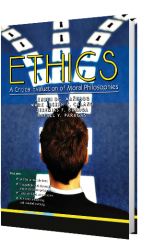Art Appreciation
Authors: Wilson K. Panisan, Leslie B. Gazzingan, and Warto M. Torrevillas
Because Art Appreciation is one of the required general education subjects in he revised General Education Curriculum (GEC) come 2016, we decided to come up with a textbook that would comply with the general education course, This subject would focus on art as art which is primarily aesthetics. Students in Art Appreciation vain be taught how to view a work of art, what to look for and how to tell if an art work is good or bad. While aesthetics is evidently important because art, after all, is primarily aesthetic, the new subject will focus on the reationship of art to the individual student and his/her surroundings_ The course then aims to provide students the opportunity to examine, experience, and even produce works of art in order to appreciate their role and purpose in life.
Students will be exposed to various categories of art such as visual arts (from the classical art forms to the modern art installations), the performing arts (music and dance, particularly Modern and Contemporary Ballet), drama and film (from mainstream to indie films), enhanced e-books, and multi-media aesthetics. This subject will thus build upon and hone the skills of urderstanding, critical appreciations and expressions of one's views. At the end of the semester, students should be able to understand and approach a work of art from a perspective informed by history and tradition and the social environment in which the art work is created. Like the other General Education Subjects, this subject is multi-disciplinary wherein students must use tools from various disciplines other than aesthetics to come to terms with the way art influences their personal lives.
At the end of each chapter, various creative exercises and activities wit be answered by students to measure their cognitive learning aside from the reaction and critique papers they will submit after watching a ballet presentation, a musical concert, an indie film, or an actual painting demonstration. Research and data collection skills will also be enhanced thru library work and Internet research. individual and group activities will be assigned in class in order to improve communication and teamwork skills thru sharing and group activities. We believe that in this age of information technology, students should be trained and tapped to integrate and utilize machinery and computer software ire creating beautiful artistic works of art.
it is our hope that the textbook will guide the students to develop appreciation and appraisal of the various arts forms and he range of the works of art the students
be taught and exposed to. We hope that at the end of each chapter in this textbook, the students would be able to employ the communicating nature of the various media of arts as a catalyst or tool in understanding themselves as individuals and the society in which they live.




